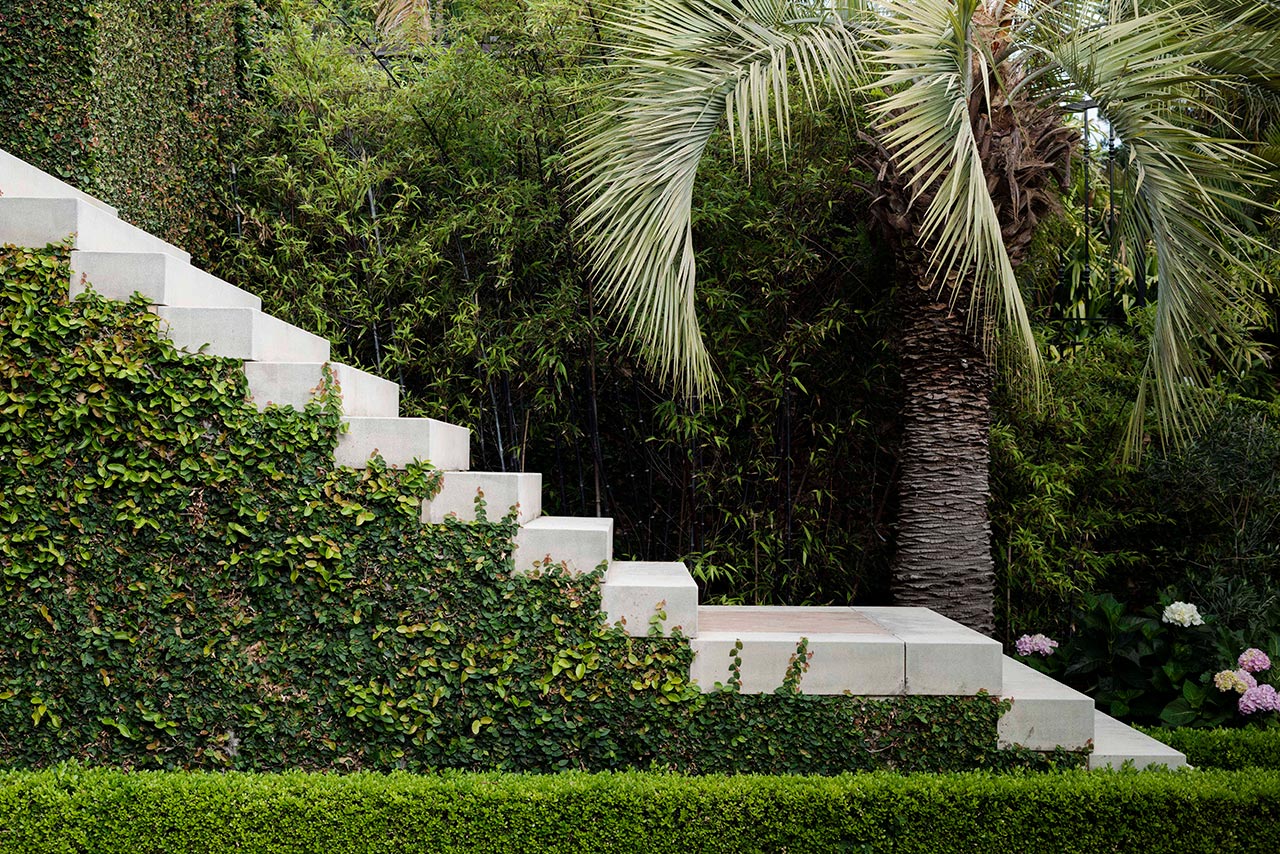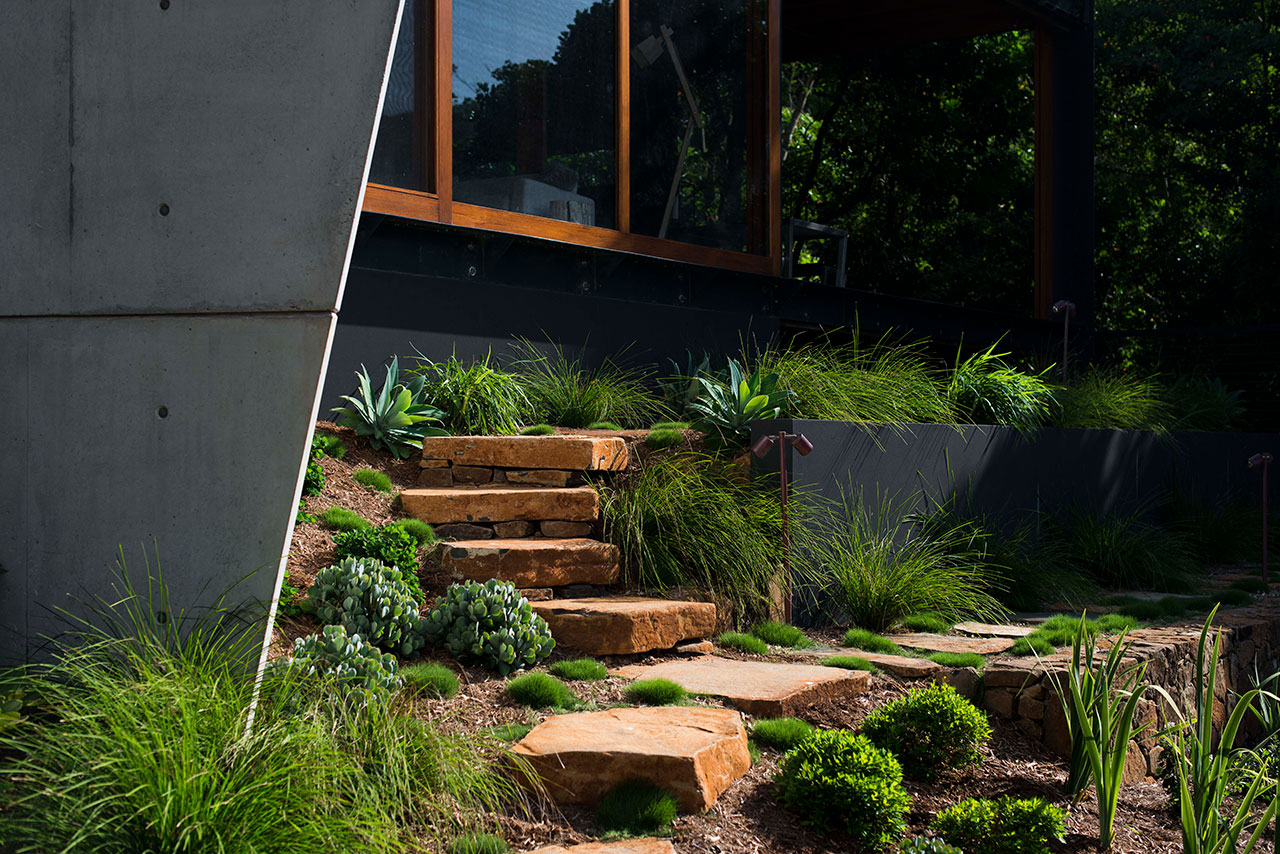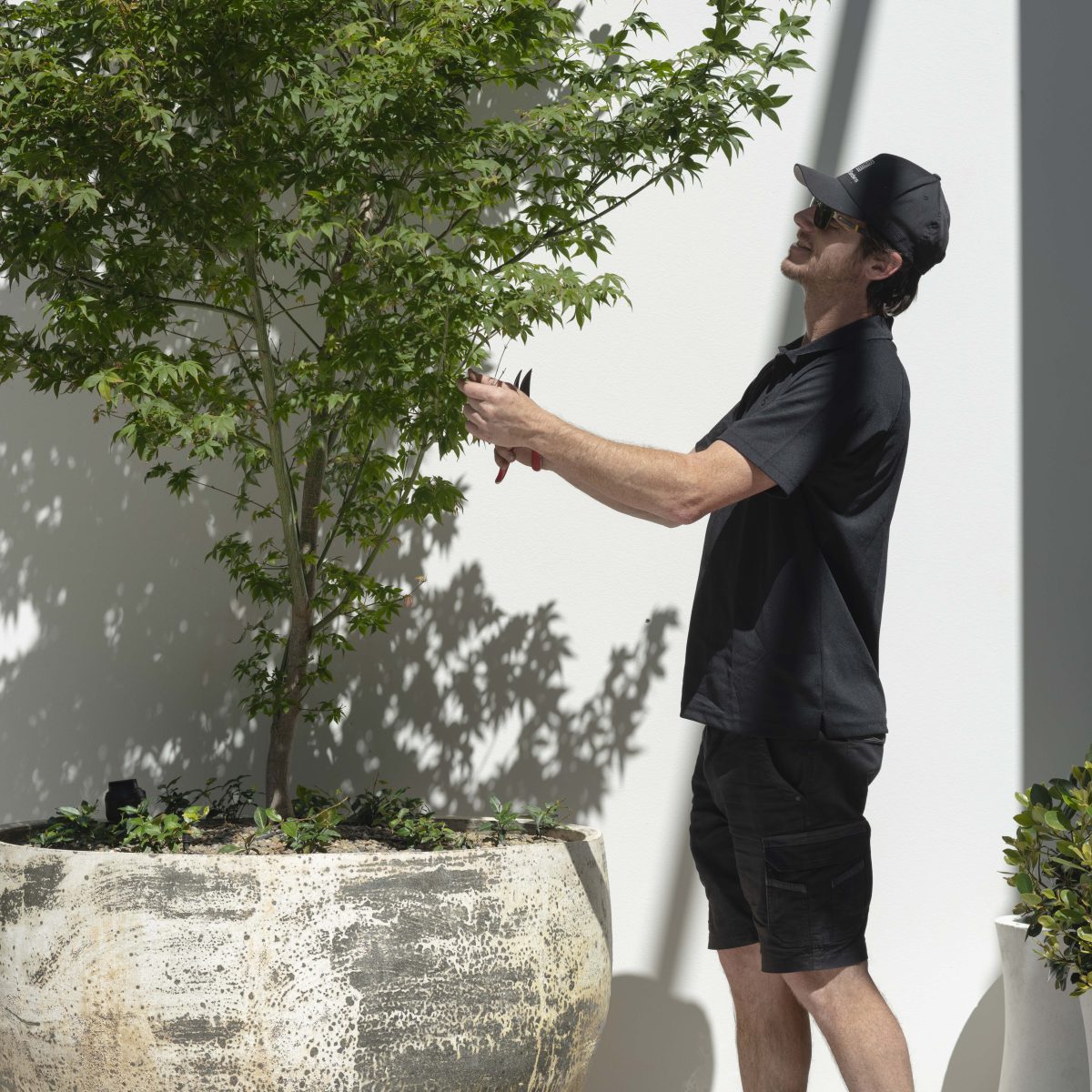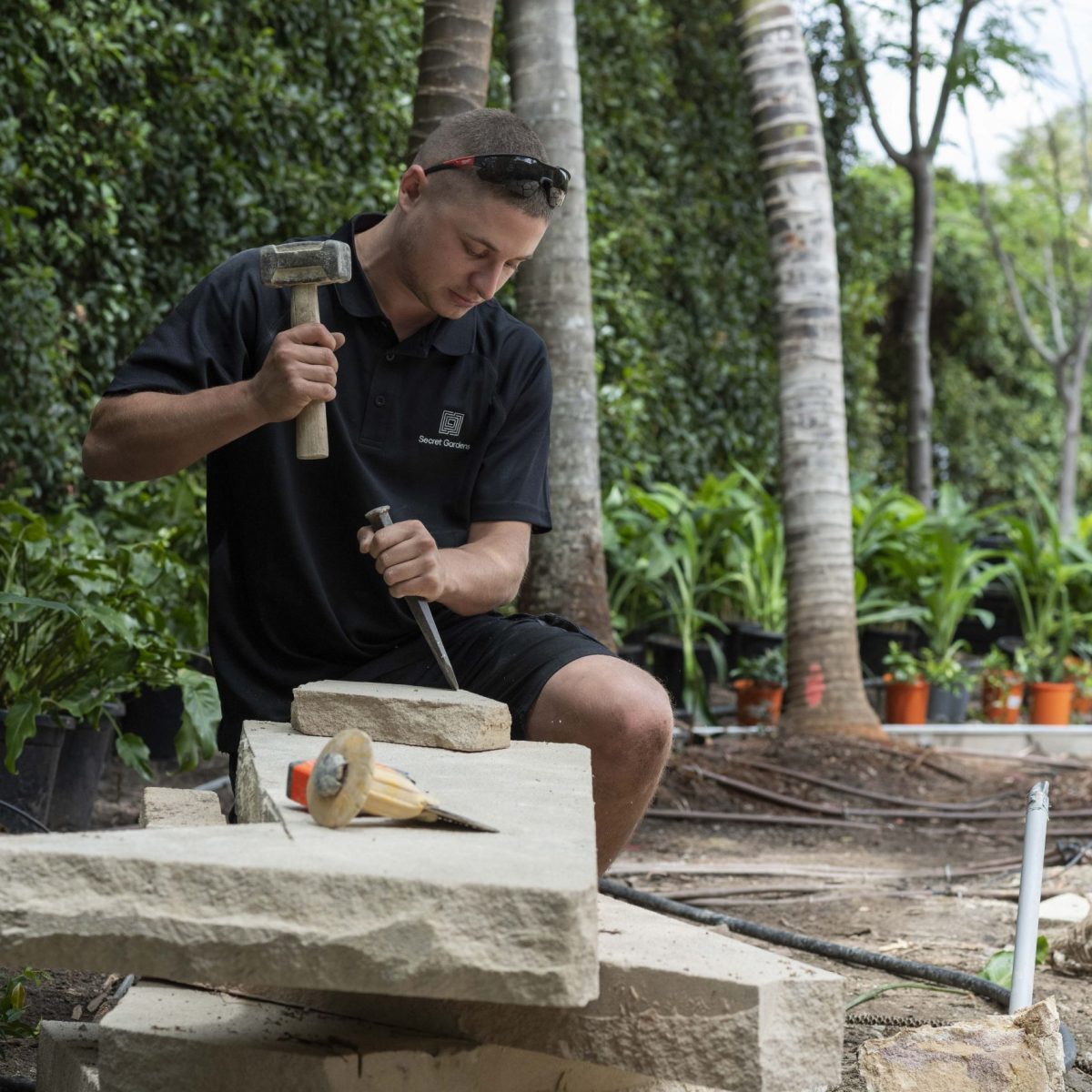Why are beautifully designed steps important?
Steps are a fact of life in many gardens, particularly in Sydney where most of our projects are based and where sites tend to get steeper and more oddly shaped the closer you get to the water. The good news is these steep sites can provide amazing creative opportunities for landscapers, with steps often the main sculptural element in the space.
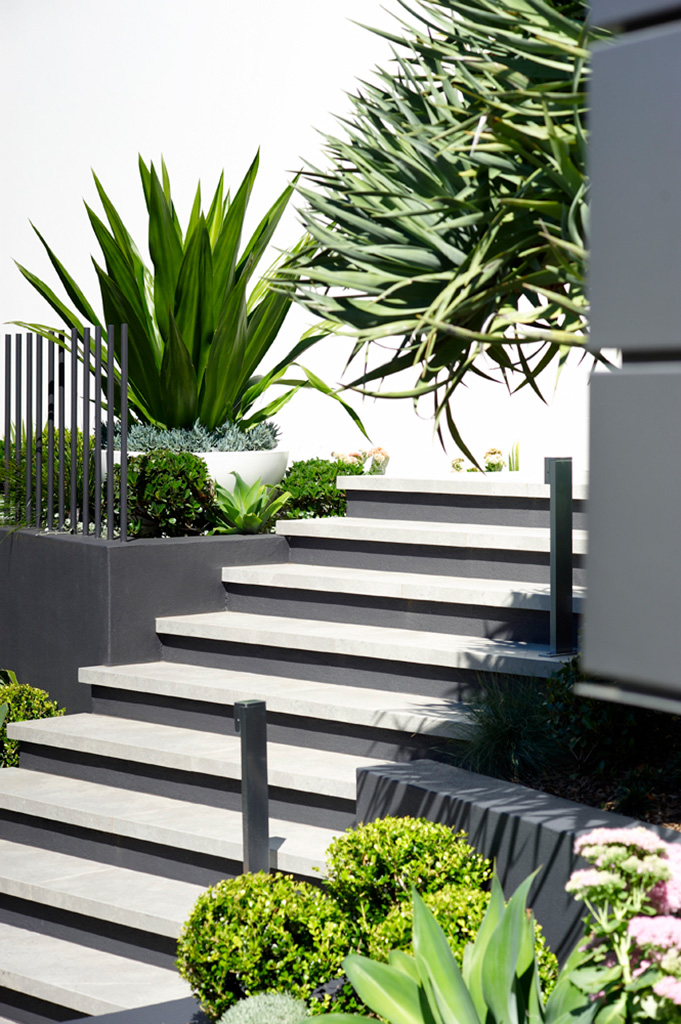
One of the first things we do when approaching a new project is to look at the crossfall of the site (the highest and lowest points) and where the level areas are or could be created. How these areas are linked – usually by steps – has a huge bearing on how one views and experiences the garden; for example, one long, thigh-punishing flight of stairs only draws attention to the steepness of the site. By contrast, breaking the stairs up with landings not only visually distracts one from the steepness of the climb, but also encourages people to meander rather than stride through the space, watching their feet, pausing to look around and noticing the beauty of the garden.
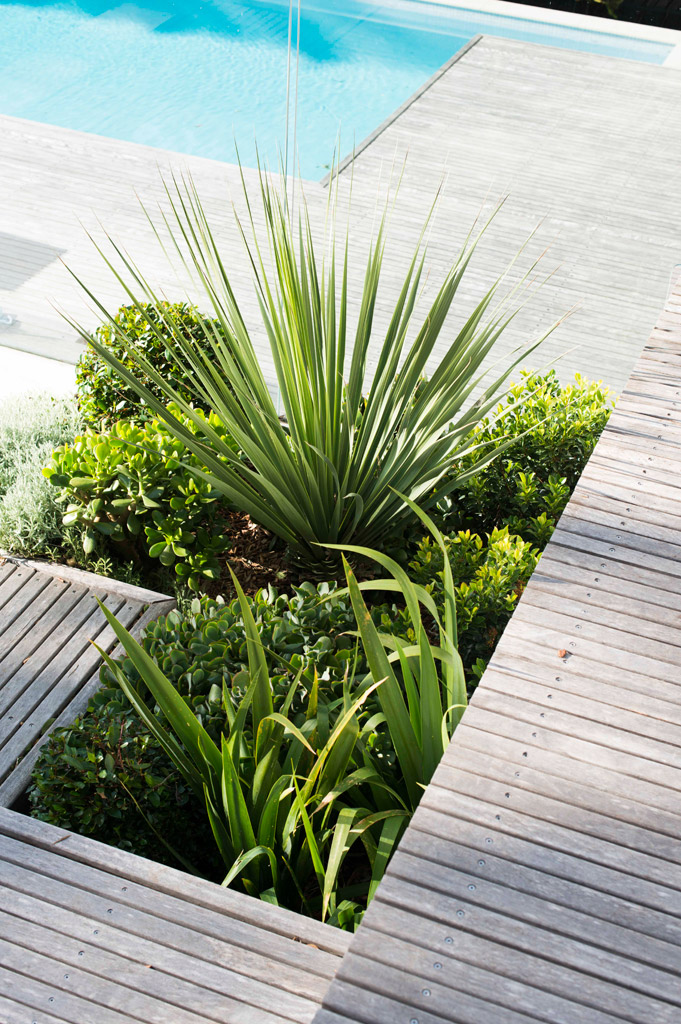
When steps are more than just steps
Beyond just linking areas in the garden, steps can be a practical addition to the landscape as extra seating – this is particularly helpful in small gardens or courtyards, where crowds can easily overflow the entertaining areas.
Mostly though, we see steps as one of the primary sculptural features in a garden – it’s all about using clever design tricks to turn them into a statement. One of our favourite strategies is to stagger the steps. Rather than a straight line between the gate and the front door, for example, it’s nice to have elongated steps, with each step shifting a few centimeters to the left or right so the whole flight travels diagonally.
An artistic masterpiece deserves a beautiful frame, and so a gorgeous flight of stairs looks its sculptural best when framed in greenery. Ideally, it’s best to minimise the amount of visible structure – as always, it’s about creating a balance between hard and soft elements. How we do this will vary from site to site; we might simply push the edge of each tread into the garden bed so the steps are lapped by greenery. Or if the steps are built on a steel frame, it’s possible to have greenery growing underneath and between the treads, so the steps look they’re floating in an ocean of foliage.
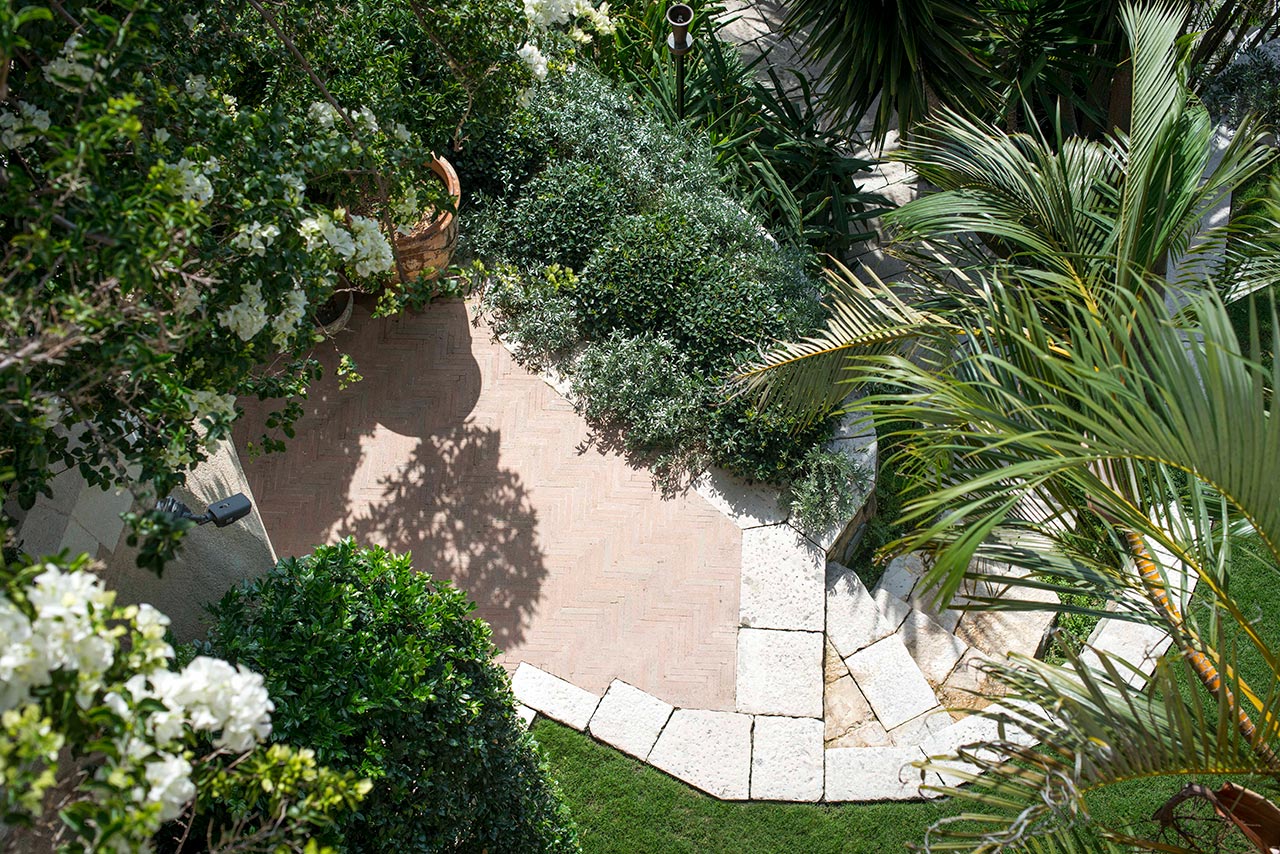
Safety first
Outdoor steps should be approached very differently to an indoor staircase. Rather than narrow treads and high risers, garden steps should be wide and low, with lovely deep treads that encourage meandering and are safer for running children and the like.
Lighting serves a dual purpose, both as a safety measure and also to highlight the sculptural form of the steps. Options include pole lights shining down onto the steps, lights set into the treads, or LED strip lights underneath the overhang of each step.
